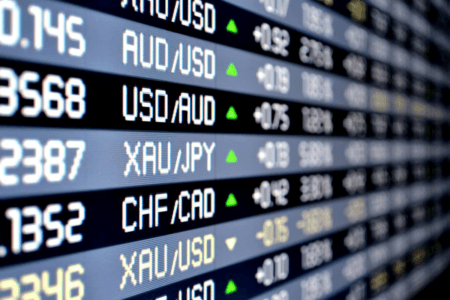In the dynamic world of currency trading, the Pakistani rupee’s latest performance is catching the eye of market analysts. During the early hours of Wednesday’s inter-bank trading, the rupee witnessed a slight appreciation against the US dollar, inching up by a modest 0.07%. At 10:15am, the rupee was trading at 279.22, marking an increase of Re0.20 against the greenback. This development follows a period of stability on Tuesday when the rupee closed at 279.42 against the dollar, per the State Bank of Pakistan’s data.
This marginal uptick comes amid a broader economic context where stability and investor confidence are crucial. S&P Global Ratings highlighted the importance of a stable political climate in Pakistan as a critical factor for the government’s creditworthiness. In their recent note, the ratings agency underscored that political stability, combined with strategic policy shifts aimed at bolstering investor confidence and curbing inflation, could pave the way for Pakistan’s sovereign ratings to improve to the “B” category.
The coming general elections in Pakistan, scheduled for February 8, 2024, possess the potential to significantly influence the country’s financial trajectory. S&P Global Ratings suggests that a newly elected government with strong popular backing and the capacity to collaborate with key national institutions might stand a better chance at securing critical external financing from entities like the International Monetary Fund (IMF).
Read: Yuan Stable Amid Moves to Boost Flagging Shares
Meanwhile, on the global stage, the US dollar is experiencing its own set of pressures. After a considerable rally, fueled by robust US job figures and hawkish comments from Federal Reserve Chair Jerome Powell, the dollar has seen a technical retreat. The dip comes in tandem with a decrease in US bond yields, which has somewhat softened the dollar’s stance.
Early Wednesday in Asia, the dollar’s movement was relatively unchanged at $1.0755 per euro, following a 0.1% step back on Tuesday. This comes after the dollar surged to its strongest level since mid-November, at $1.0722.
The US dollar index, which benchmarks the dollar against six other major currencies including the euro, exhibited a flat trajectory at 104.14. This followed a mild decline on Tuesday, retracting from its peak since November 14 at 104.60.
Adding another layer of interest to this economic narrative are oil prices—often a bellwether for currency valuations. Oil prices have been on a subtle rise for three consecutive days, reacting to data showing a lesser-than-expected growth in US oil inventories and a sharp downward revision in forecasted oil output growth by the US. This has helped assuage concerns over potential oversupply, providing a nudge to the oil markets.
In the latest figures, Brent crude futures ticked up 0.2% to $78.75 a barrel, with US West Texas Intermediate crude also on the ascent, climbing 0.3% to $73.51. These incremental movements reflect the delicate balance of global economic forces and their intertwined influence on currency strength and oil market dynamics.
Today’s financial landscape is an intricate mosaic of interrelated factors, where local political shifts, global market sentiments, and commodity price changes coalesce. The Pakistani rupee’s small gains might seem trivial against the backdrop of global economic trends. However, they are a testament to the country’s resilience and the impact of wider fiscal and monetary policies. As Pakistan navigates its upcoming elections and continues to engage with international financial institutions, its steady approach could very well define the country’s economic future.
Tags: #PakistanRupee, #USEconomy, #ForexTrading, #OilPrices, #InternationalMonetaryFund
What’s your take on this? Let’s know about your thoughts in the comments below!












